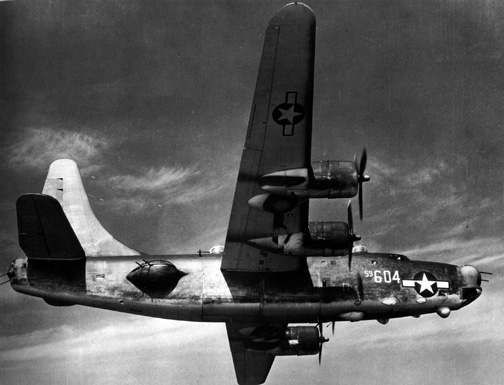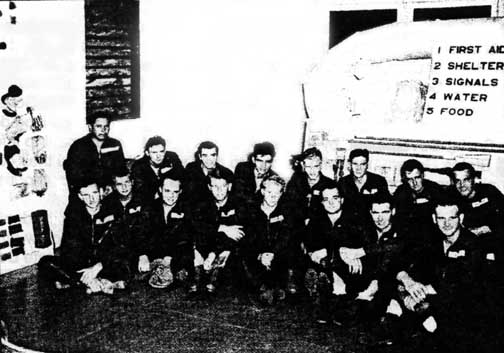|
The Impact of U.S. Aerial Reconnaissance during the Early Cold War (1947-1962): Service & Sacrifice of the Cold Warriors |
||||||
|
Page 3 of 5 Pages Beyond the U-2 The Silent Warriors’ Service, Sacrifice and Mysteries As illustrated during the Cuban Missile Crisis, aerial reconnaissance played a vital role in providing crucial information to the U.S. military and civilian leadership. Not only did the U-2 provide the first indicators of a possible threat but it also provided the definitive proof needed for the President to choose the course of action he wanted to follow in meeting this threat. President Kennedy’s final decision to force a blockade and issue an ultimatum to the USSR was made easier largely due to years of aerial reconnaissance vigilance over and around the USSR. Armed with this knowledge, the President knew the USSR’s real strengths and weaknesses prior to deciding how to confront Cuba and the Soviet Union. But all of this knowledge came at a steep price. During the Cold War, over 40 U.S. aircraft and hundreds of men were lost to hostile fire. Double those numbers were lost in mission-related accidents and operations. While compared with other U.S. conflicts like WW I, WW II and Korea, this number may seem small. The greatest difference, however, is that these men served (and died) in silence. The shroud of secrecy that surrounded these various reconnaissance missions has yet to be fully lifted. I will discuss some of these mysterious, yet unsolved, aerial reconnaissance losses in the context of briefly outlining what occurred during these incidents and how U.S. and Russian efforts play a role in trying to better understand what happened. Cloaked in Secrecy: How secretive were some of these aerial reconnaissance flights? So secretive that professional Air Force historians cannot find surviving documentation for many of them. The only source for many of the Cold War’s beginning aerial reconnaissance efforts have come from the USAF and USN veterans who have begun to tell their stories. Many authors have noted that researchers can always find the official documents restricting U.S. reconnaissance aircraft to stay specific distances outside of foreign borders, but what researchers cannot find are any written documents ordering aircraft to probe defenses to solicit reactions. Could the documents no longer exist because they have been purged from the official archives – or did they ever exist? In personal interviews with scores of SAC reconnaissance pilots and crewmen, I have been told on several occasions of instances when navigational maps, pilot charts and collection logs were confiscated as soon as the mission aircraft returned to base. Additionally, many orders were given verbally with a very strict need to know. One outcome of this type of secrecy is documented cases of U.S. forces intercepting our own reconnaissance missions. This occurred when regional commanders were not told about ongoing reconnaissance missions in their own areas. Other documented instances occurred when in-flight emergencies forced missions to land at bases where they were not on the flight plan-causing the brass to vouch for the crew and aircraft. Some flights were so cloaked with secrecy that crews did not receive awards and recognition for meritorious and dangerous missions. When crews did receive awards, it was usually “blanketed” under some other criteria or justification (129) An example of this is the previously mentioned RB-47 overflight of the Kola Peninsula in May 1954. The RB-47 pilot and copilot were personally debriefed by the SAC Commander, General Curtis LeMay. General LeMay told them he wanted to give each of them a Silver Star for this mission but that such an award would cause too much attention. Instead he awarded each of them two Distinguished Flying Crosses for the mission. (130) Another example is a unit award that was delayed over 40 years due to the continued classification of its reconnaissance work. At the SAC Association’s 50th Reconnaissance Reunion in August 1996, the 72nd Reconnaissance Squadron was finally awarded the Air Force Outstanding Unit Award it had earned for missions flown between 1947 – 1950. Exploring the POW/MIA Issue: When the USSR dissolved and the Cold War was pronounced over, cracks began to appear in the previous Soviet lack of openness. New Russian President Boris Yeltsin admitted that “during the 1950’s nine U.S. aircraft were shot down over the territory of the USSR. The records show that as of August 1, 1953, eight American citizens were held in Soviet prisons and prison camps and four others were held in special psychiatric hospitals.” (131) While President Yeltsin’s statements are ambiguous at best, and did not specify if these were reconnaissance crewmen — or even military men – it was enough to demand further investigation. For this, President Bush and Yeltsin created a Joint Commission that would begin to explore the circumstances surrounding past Prisoner-of-War and Missing-in-Action (POW/MIA) claims. The subsequent U.S./Russian Joint Task Force (JTF) Commission was chartered to look into POW/MIA issues from WW II, Vietnam and the Cold War. The Cold War mostly centered on the loss of aerial reconnaissance missions during times of both peace and conflict. From the dozens of cases where unclear circumstances surrounded the loss of a U.S. Reconnaissance aircraft, the Joint Commission selected ten cases on which it would center its investigations. The first of these cases was the Soviet shootdown of the Navy PBY-4 in the Baltic on 8 April 1950. The First Mystery Investigated: In the case of the PBY-4 incident, as would occur in many other cases, the Commission investigation proved that both the U.S. and USSR were guilty of deception. These deceptions ran from using the semantics of language to blur statements (like the U.S. response to the Soviets in July 1956 that no “military” aircraft had overflown the USSR), to outright lies and cover-ups (when Soviet authorities stated they had no clue as to what happened when, in fact, subsequent testimony of the MiG pilots involved told a different story.) |
||||||
 |
||||||
|
Source: Wm. N. Hess, MBI Publishing Co., Great American Bombers of WW II, Page 243 |
||||||
| In the case of the Baltic PBY-4 investigation, the U.S. Navy was finally forced to state the aircraft was not on a “routine patrol mission” but was actually involved in one of the USN’s first Sensitive Intelligence (SENSIT) missions collecting Soviet electronic emissions from a missile base on the Baltic. One the Russian side, joint commission members have faced testimony of many former Soviet GULAG detainees who sighted and talked to many of these Navy crewmen years after the date of the incident. This case is still under investigation by the joint commission.
RB-50 Crew’s Disappearance: Another of the cases under investigation by the Commission is the Soviet shootdown of an RB-50 aircraft off Valdivostok on 29 July 1953. In this case, the original Soviet position was that it shot down the RB-50 in an unprovoked confrontation after the U.S. reconnaissance aircraft violated its airspace and fired its guns at intercepting Soviet MiGs. The Soviets claimed “The aircraft was last seen flying out to sea” and that they did not know what happened to the aircraft or its crew. The U.S. position (via State Department Press Release) stated that the U.S. plane was on a “routine navigational training mission....well over international waters approximately 40 statute miles from the nearest Soviet territory.” (132) As subsequent evidence would show, both sides were covering up known facts. |
||||||
 |
||||||
|
Source: Bruce M. Bailey, We See All: Pictorial History of the 55th Strategic Reconnaissance Wing (55th ELINT Association Historian, 1982), 23. |
||||||
|
Unlike most of the other shootdown cases, one of the RB-50 crew survived this ordeal and his post-rescue testimony tells a different story. Captain John Roche, the RB-50 copilot, stated that after being hit, the crew bailed out of the aircraft (he being the last out). After hitting the water, Capt Roche stated he heard cries of other crewmen in the water and heard what he assumed were Soviet patrol boats which arrived on the scene. Some of these boats came so close that he ducked his head underneath the waves so as not to be seen. (133) USAF rescue planes sent to the scene also reported having seen U.S. crewmen in the water and Soviet boats approaching the area from Vladivostok. Soviets participants on the scene say they saw crewmembers parachuting out of the aircraft as well. (134)
Editors Note: You may review John Roche’s personal story The U.S. Government attempted to find out about the status of the other crewmen by directing the U.S. ambassador in Moscow to ask the Soviet Deputy Foreign Minister (Andrei Gromyko) for assistance. When that failed, the Soviet Foreign Minister (Vladamir Molotov) was queried directly – the Soviets stuck to the story that they knew nothing about the crew. (135) The U.S. Government billed the Soviets $2,785,492.94 for the loss of the airplane and its crew and stated that the U.S. must conclude that these persons were either picked up alive by surface vessels of the Soviet Government in the area in which they hit the water, or that in due course, dead or alive, were carried by prevailing currents to Soviet-held territory and into [the] Soviet Government’s custody.... Those that were alive when they came into the custody of the Soviet Government, the United States Government find and charges suffered in addition to injuries and anguish by their long detention by the Soviet Government, by the failure of the Soviet Government to inform the United States Government with respect to their whereabouts and their condition or permit them to communicate with the United States Government authorities. (136) After receiving no further clarification from the Soviets about this incident, the State Department and Truman administration seem to have written the crew off. In a handwritten response to State Department lawyers, Walter Stroell, The State Department Soviet Affairs officer, wrote “We feel we had better cease fire on this one.” (137) This case is still under investigation by the Joint Commission. |
||||||
|
Attributions (129) U.S. aerial reconnaissance flights were considred so dangerous that up until the early 1990’s crew members were awarded Air Medals for every 25 missions flown – an award usually reserved for combat operations in time of war. Auhor knows a recently retired USAF MSgt. who spent his entire career flying aerial reconnaissance missions and at the time of his retirement he had accumulated 28 Air Medals. End of Page 3 of 5 Pages, Chapter 5 — Go to Page 4 You may go to Page — 1 — 2 — 3 — 4 — 5 — this chapter or you may go to Cover Page — Editor’s Introduction — Overview Acknowledgments — Table of Contents Appendixes — A — B — C — D |
||||||